Text description provided by the architects.
Ethiopian history, culture and existing reality were the driving forces in deciding the design concept. Diversity in Ethiopia is manifested in several forms, including identity, religion, culture and nature. It is believed that the unity within diversity is the corner stone of existence and this was used as a design concept along with the idea of ‘New beginning’ and the hope it brings, by designing an urban art installation that represents hope, diversity and unity.
The bright yellow color, which is likewise centered on the Ethiopian multicolored flag, has long been seen as a sign of a joyous, youthful color, full of optimism, sunshine, sincerity, and enthusiasm.

© Alebel Desta Consulting Architects and Engineers
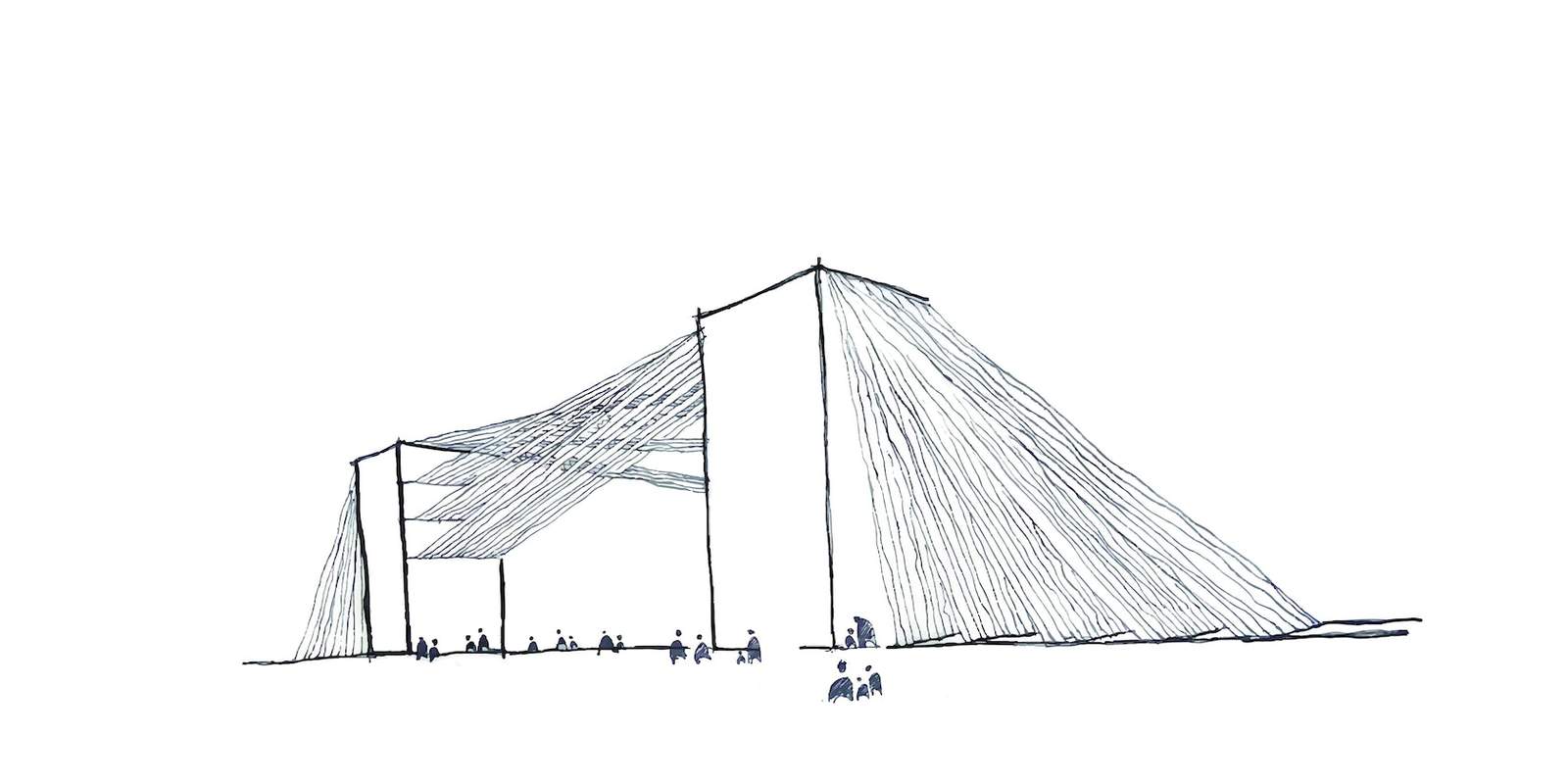
© Alebel Desta Consulting Architects and Engineers
The ‘Adey’ flower, which is a symbol of good hope and a wish for a happy and prosperous year for Ethiopians, is also represented by yellow.
The two grand colossal vertical tower components represent a portal to a new beginning, a new chapter, and a new way of thinking. Their scale depicts individuals as being small compared to the representation of Ethiopia.
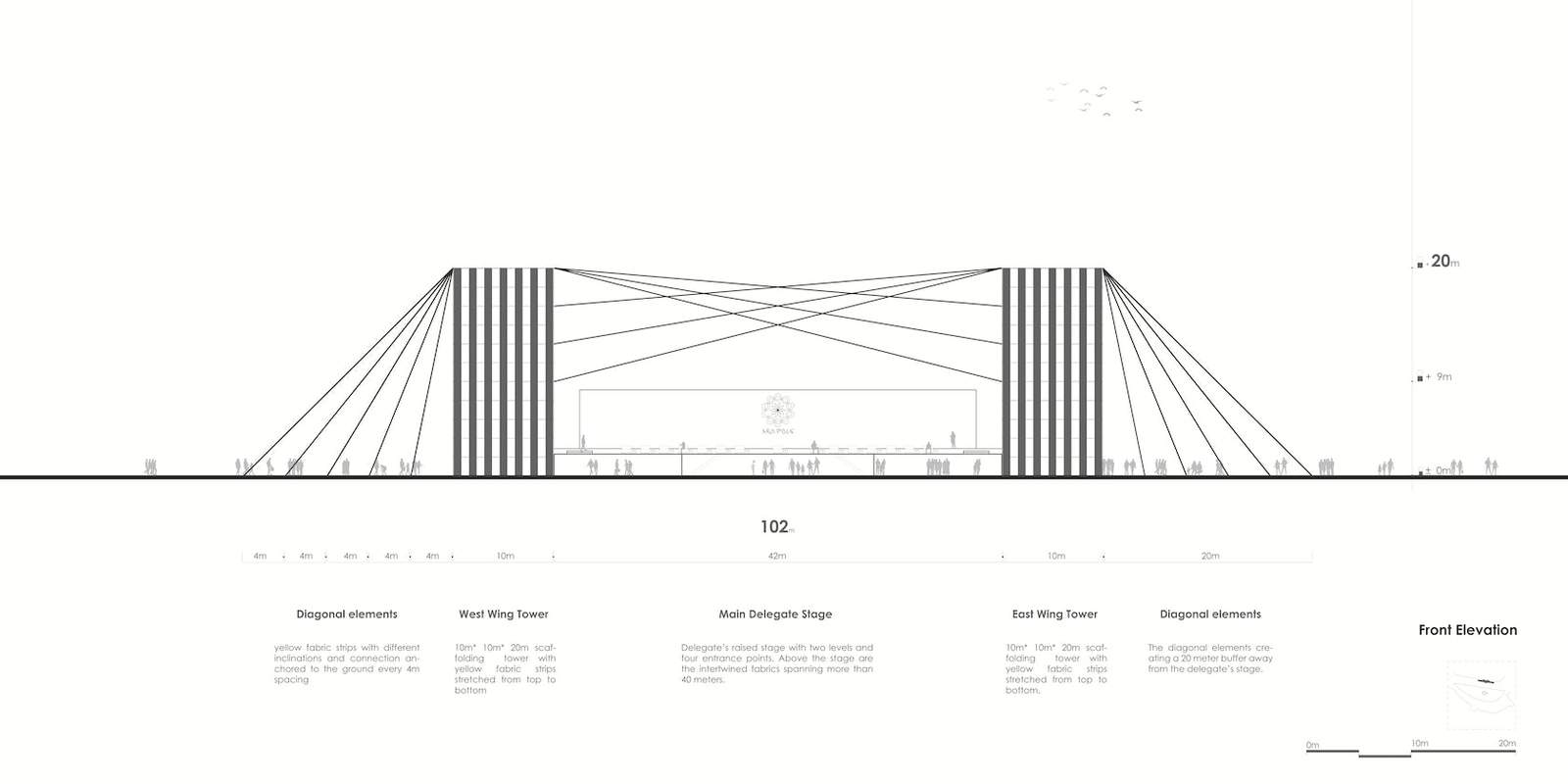
© Alebel Desta Consulting Architects and Engineers

© Alebel Desta Consulting Architects and Engineers
The equal vertical strips of fabrics surrounding the towers depict people’s equality regardless of their identity, religion and culture. Another major element is the interwoven individual strips of fabric that are stretched out between the two towers, it portrays the unity of Ethiopians. On the sides of the towers, the diagonal numerous fabric strips with varying inclinations, sizes, locations, and linkages depict diversity.
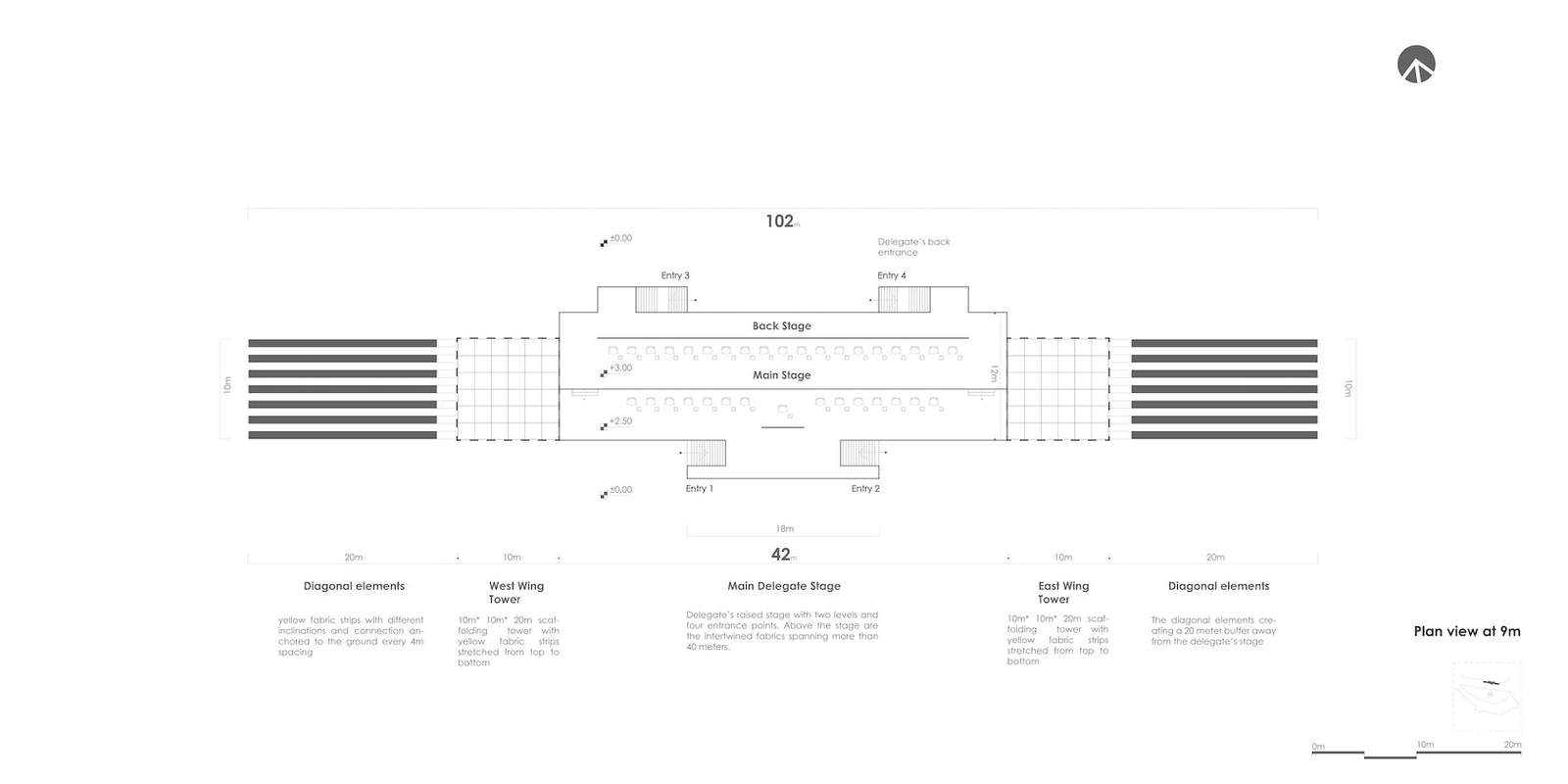
© Alebel Desta Consulting Architects and Engineers

© Alebel Desta Consulting Architects and Engineers
We all have a different identity, culture, and religion, yet we are all one at the end of the day, Ethiopians in every sense of the word. The diagonal lines at the side were also intentionally used to deviate from the common horizontal and vertical lines in our environment to create visual interest.
The wind, the rain, and all the other forces represent the powers that threaten Ethiopia’s existence.

© Alebel Desta Consulting Architects and Engineers

© Alebel Desta Consulting Architects and Engineers
Ethiopians’ resilience in tolerating pressure and moving spiritedly forward is reflected in the fabric’s flexibility, which allows it to easily accept force and project back without harming the structure.
In terms of a design response to the site, after studying the historical and cultural significance of Meskel square, in line with the nature of inauguration ceremonies, the site arrangement was done mainly based on functionality, security, hierarchy, and aesthetics.
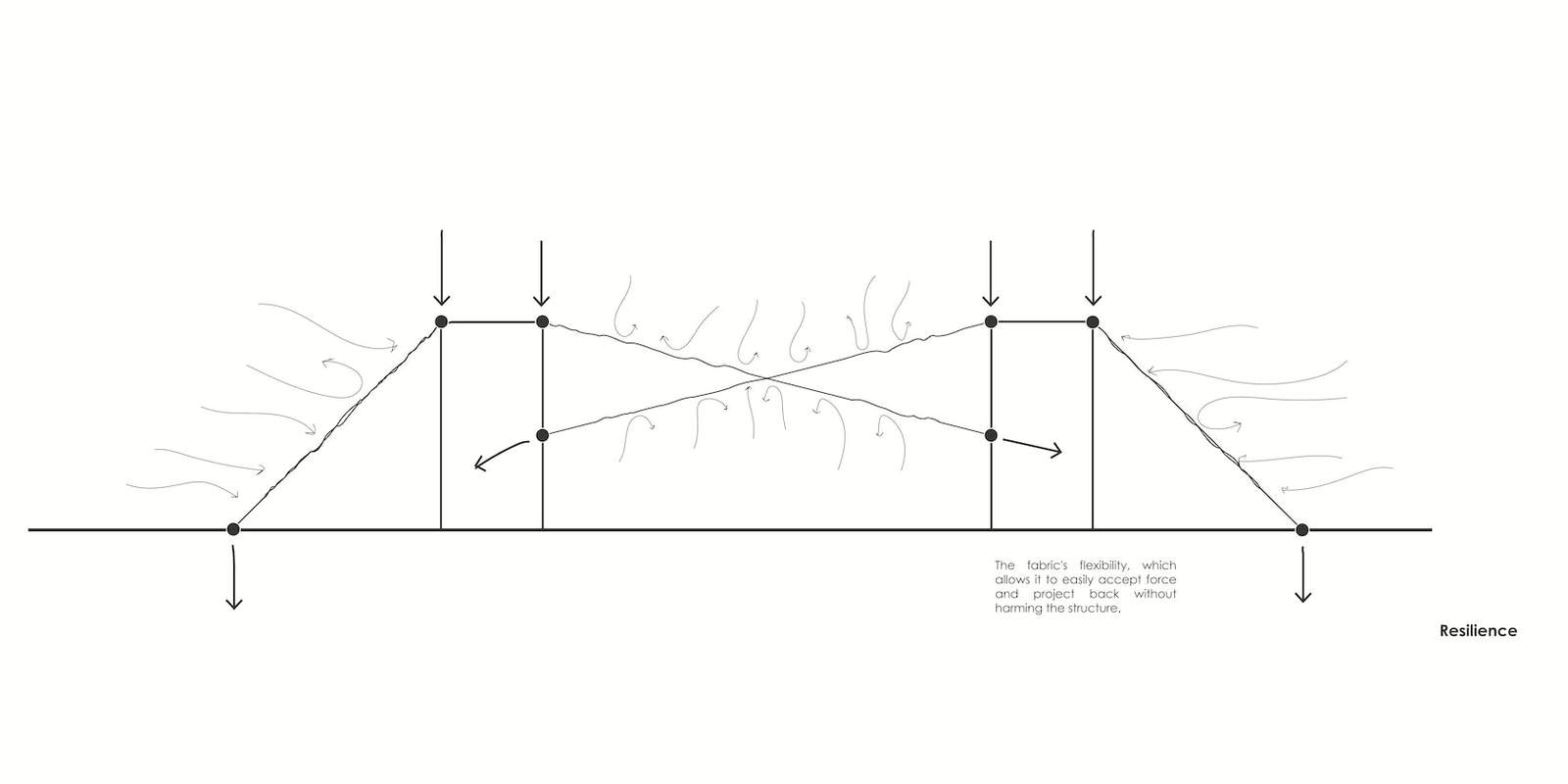
© Alebel Desta Consulting Architects and Engineers
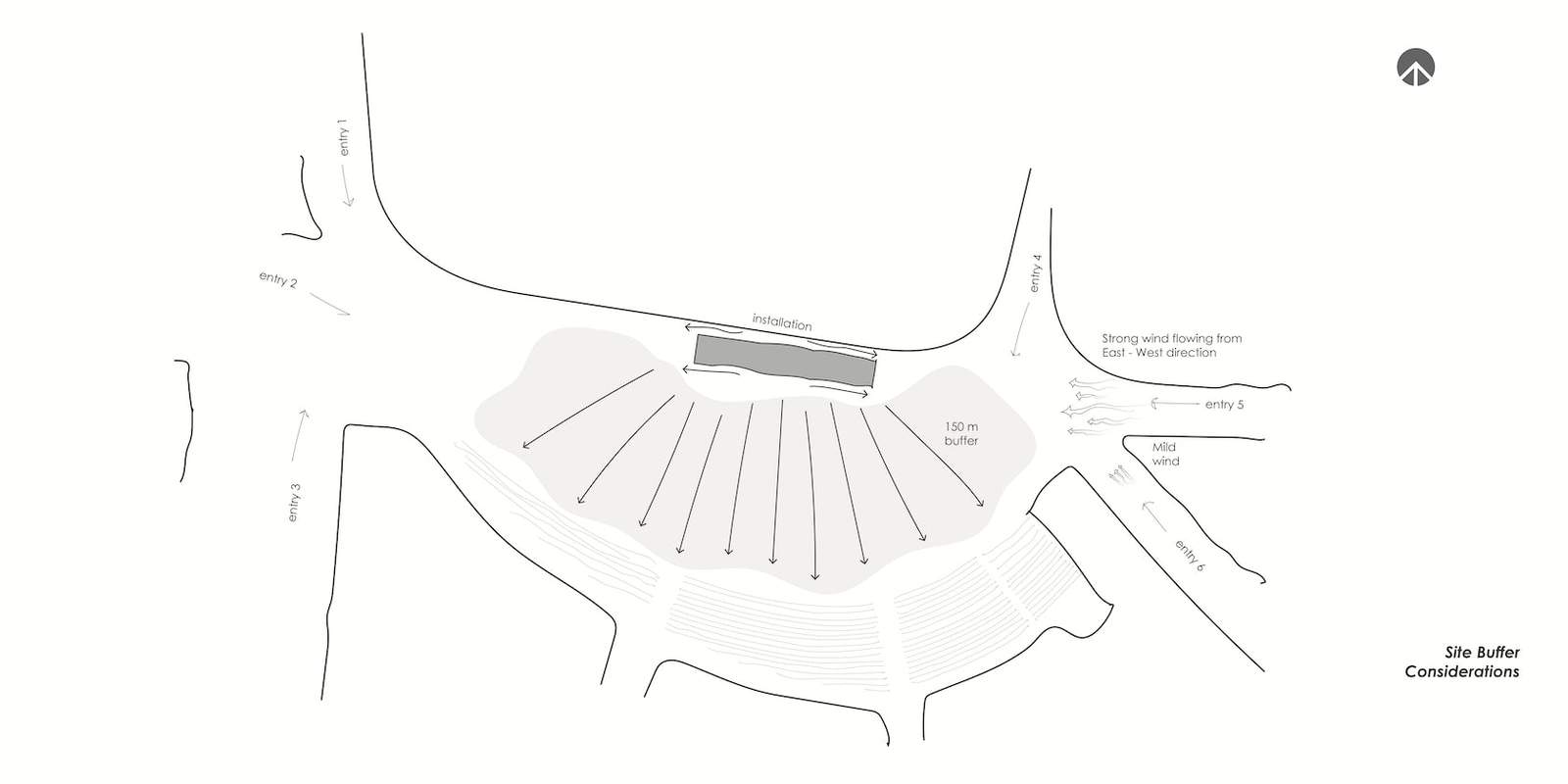
© Alebel Desta Consulting Architects and Engineers
The dominant urban art installation was placed in front of the LRT line in response to the arrangement of the Meskel square amphitheater. The performance stage was designed for music and choreographed dance performances, placed as a central element for the whole site with emphasis given to the performer through creating levels.

© Alebel Desta Consulting Architects and Engineers
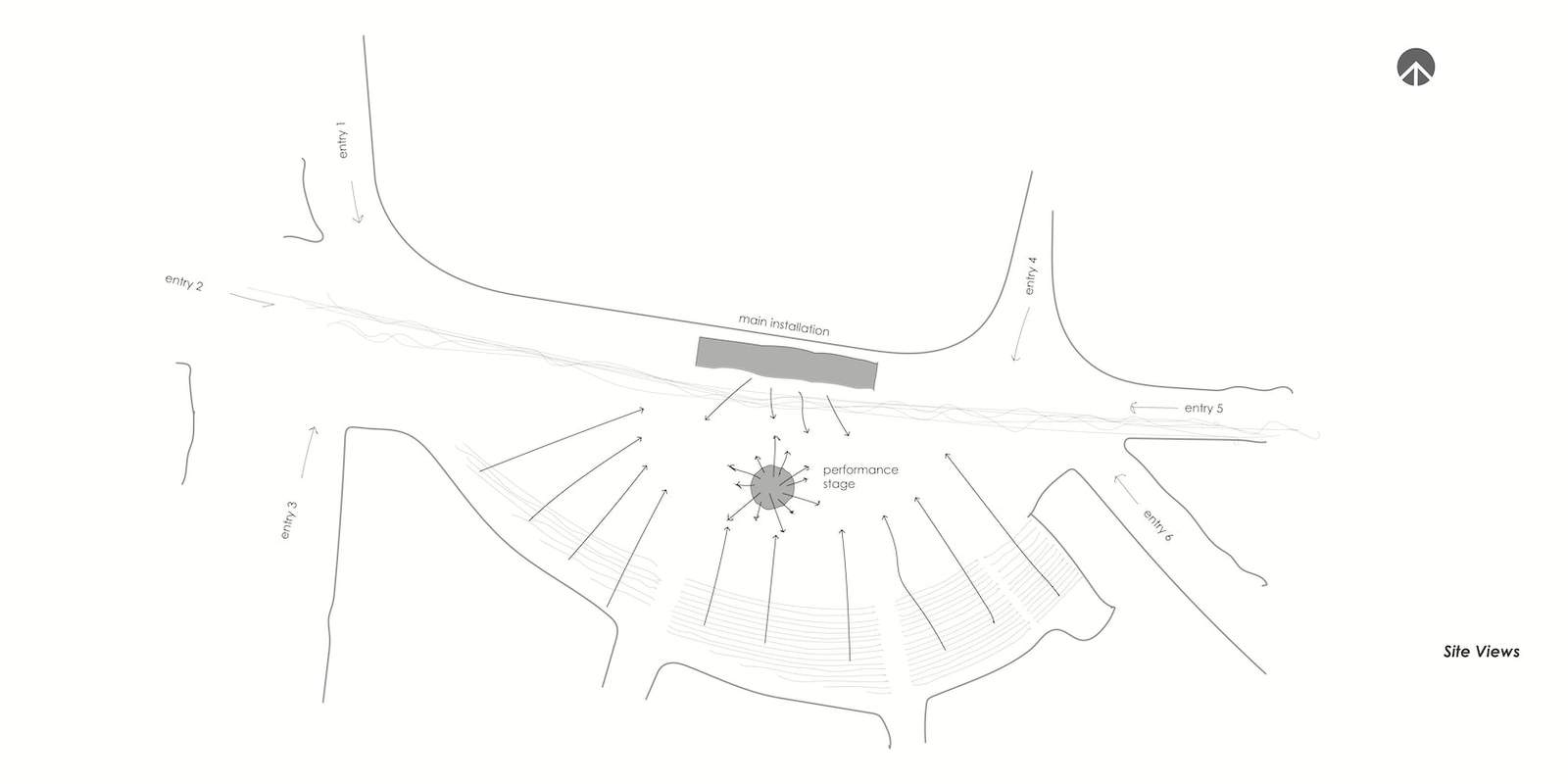
© Alebel Desta Consulting Architects and Engineers
The yellow belt that lies on the wall behind the amphitheater is a symbol that ties all Ethiopians together and unifies the whole site.
More than 300 individuals have contributed to the success of this project including Architects, Engineers, fabric experts, visual artists, carpenters, technicians, metal workers, laborers, and others.

© Alebel Desta Consulting Architects and Engineers
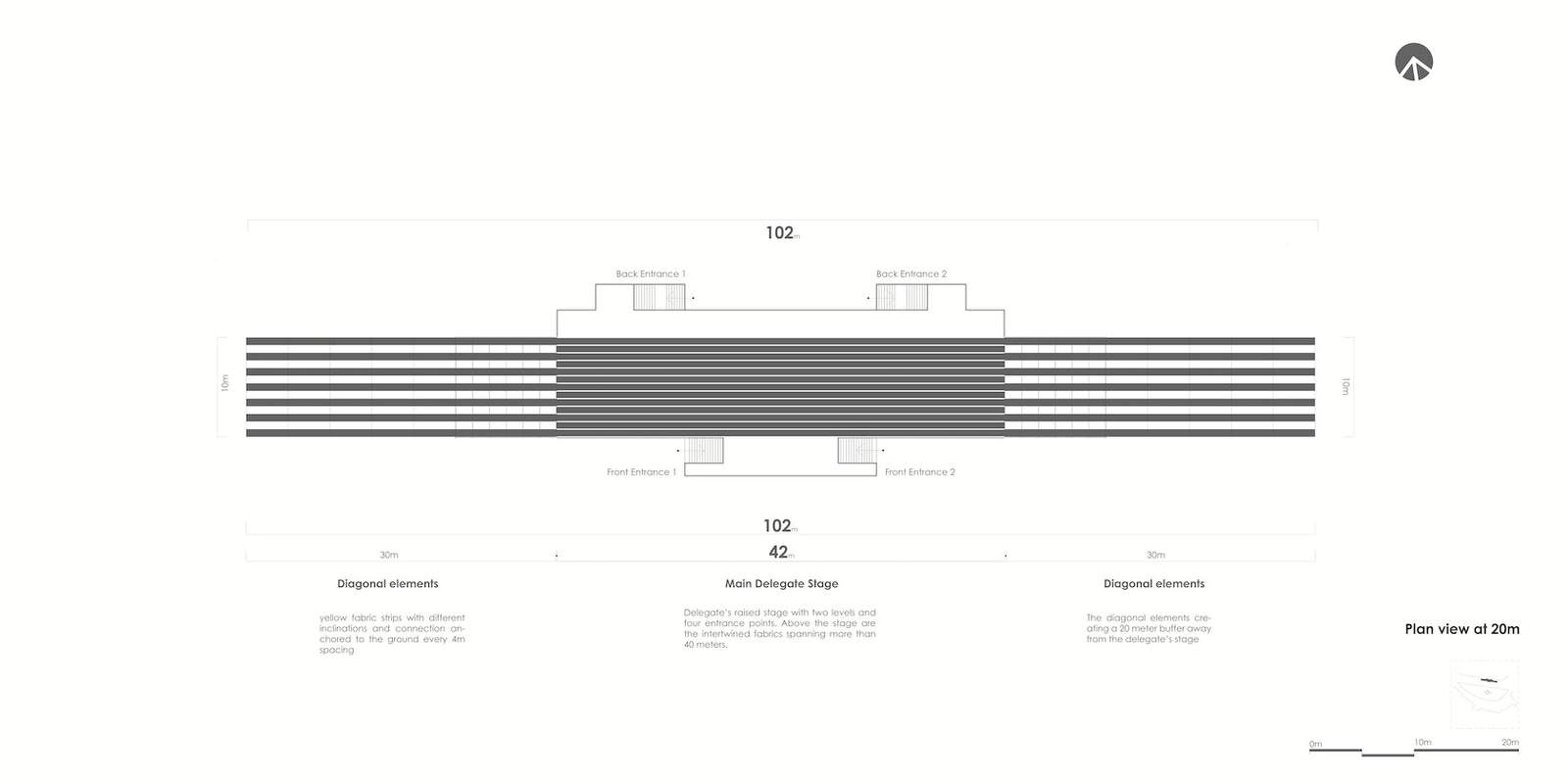
© Alebel Desta Consulting Architects and Engineers
From conception to the inaugural day, the project took four weeks. After three weeks of design and prefabrication of fabric elements, on-site construction started on September 27, 2021. Due to the tight schedule, the project was implemented while celebrating holidays and the team worked seven consecutive days and nights on site.
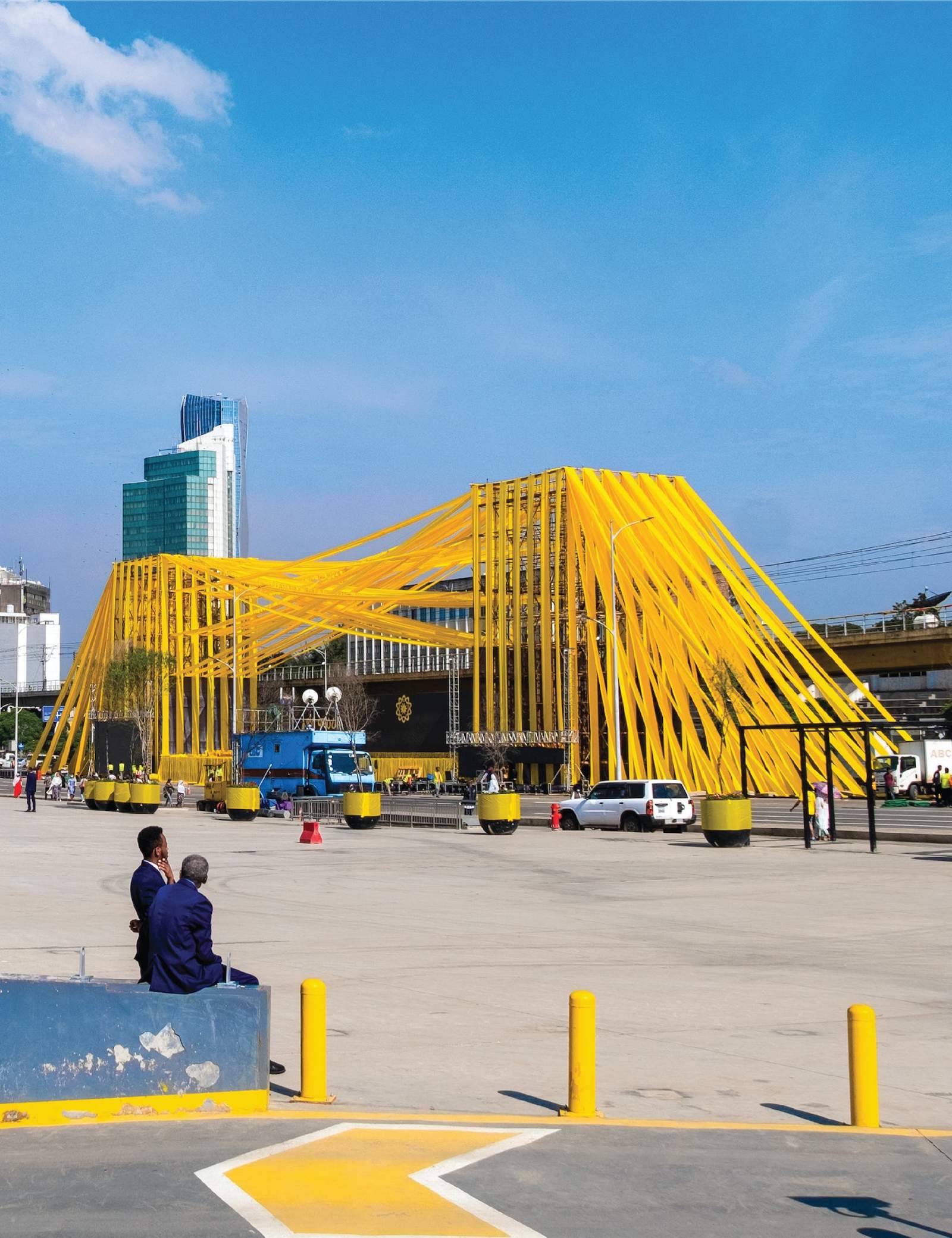
© Alebel Desta Consulting Architects and Engineers

© Alebel Desta Consulting Architects and Engineers
The success of the urban art installation doesn’t only rely on the success in effectively conveying design ideas, but also on its ease of construction and disassembly, due to the appropriate selection and use of materials. Yellow fabric, scaffolding, plywood, and timber supports were the major materials in the construction of the urban art installation.

© Alebel Desta Consulting Architects and Engineers

© Alebel Desta Consulting Architects and Engineers
The fabric utilized is a satin textile that was fabricated in advance off-site. This unique choice of material is the reflection of Alebel’s long experience of experimenting with different materials in his design studio, which helped him to be bold to work with fabric. The fabric was placed in its appropriate position as soon as the scaffolding was completed and it was then assembled based on the design.

© Alebel Desta Consulting Architects and Engineers

© Alebel Desta Consulting Architects and Engineers
The fabric also makes it possible to span 50 meters with no intermediary support, a span that cannot be achieved with other materials. As for the scaffolding, it was a major component of the design and a basic building scaffolding was chosen as the fundamental framework due to the tower’s grand scale and the limited amount of time available.

© Alebel Desta Consulting Architects and Engineers

© Alebel Desta Consulting Architects and Engineers
It only took a short amount of time to put together, and none of it went to waste. The scaffolding was transferred to a construction site as soon as the structure was disassembled.Sustainability is of great importance, especially for developing countries like Ethiopia. In this regard the urban art installation was designed with sustainability in mind, considering ways of recycling, reusing, and upscaling materials for other uses.

© Alebel Desta Consulting Architects and Engineers
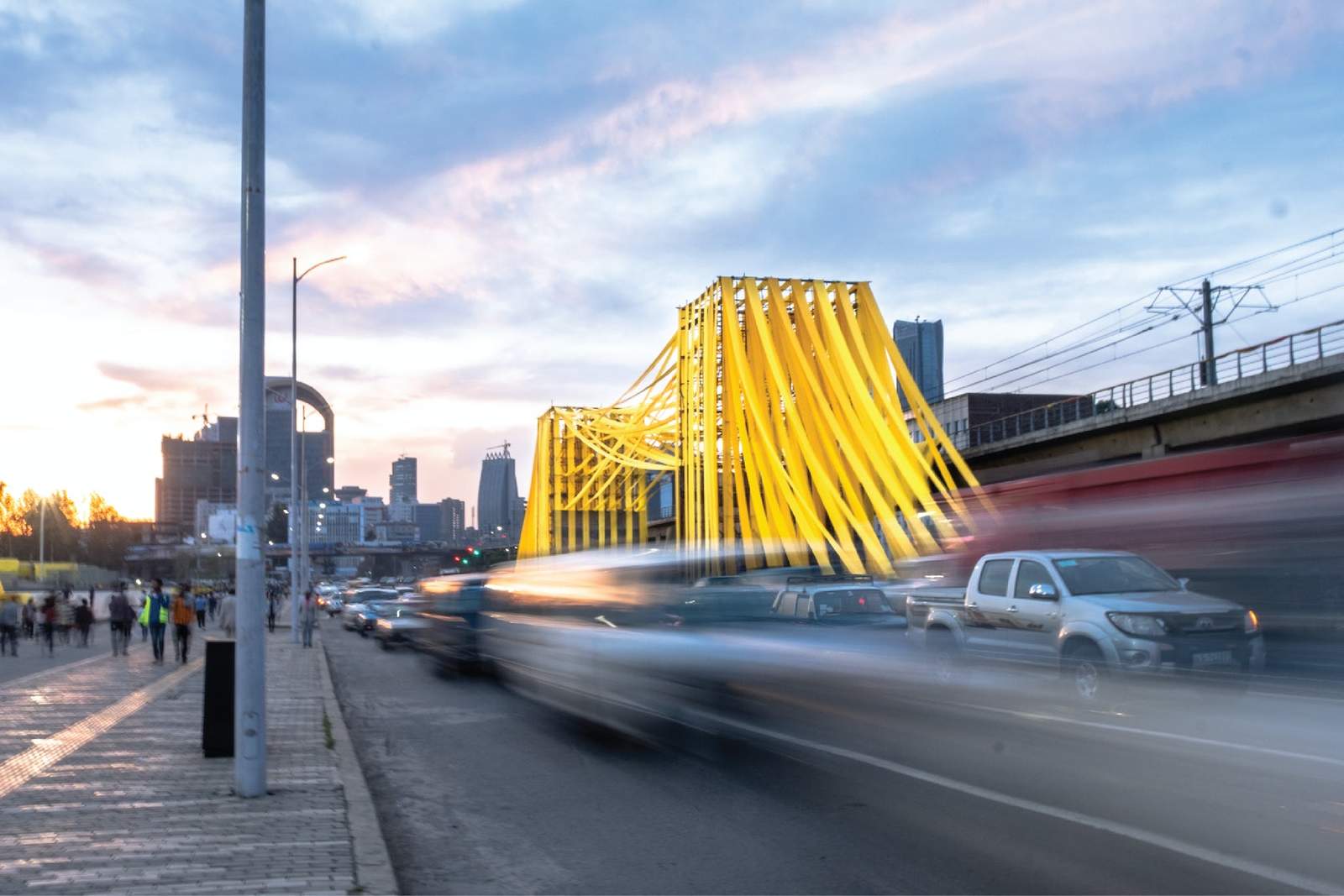
© Alebel Desta Consulting Architects and Engineers
The design was implemented as cost-effective as possible. Locally available construction materials were used to reduce cost and transportation distance. The yellow fabric is locally manufactured and the cheapest of all fabrics available on market. As for the scaffolding, it will be reused for future construction and it was transferred to a new site as soon as the structure was disassembled.
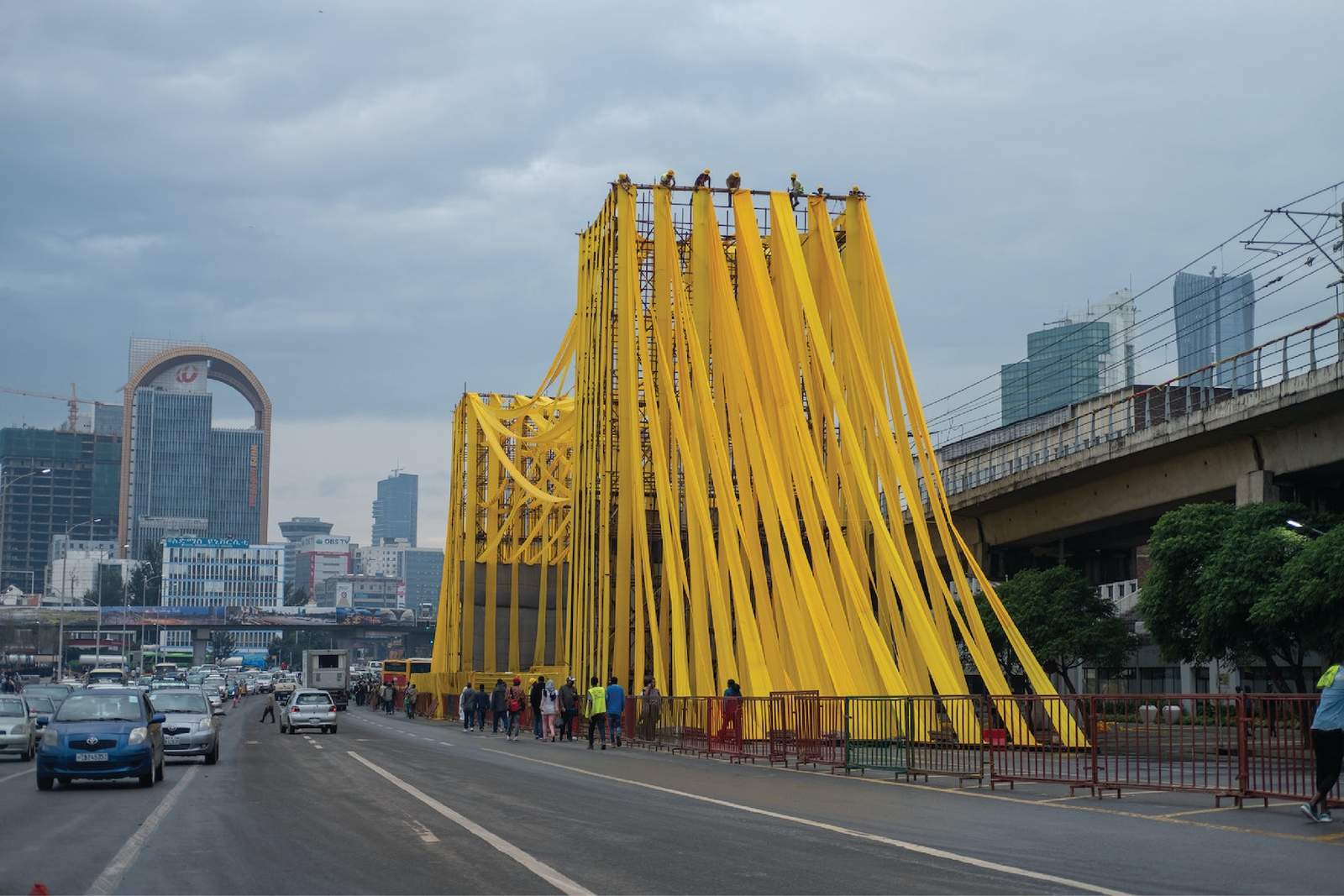
© Alebel Desta Consulting Architects and Engineers

© Alebel Desta Consulting Architects and Engineers
Timber support structures and plywood will be used as formworks for future constructions. Overall the project was designed in a way to minimize waste, reduce environmental impact and save time.Moreover, the construction and disassembly of the installation were designed in a way to simplify work, and be cost-effective and time-efficient.
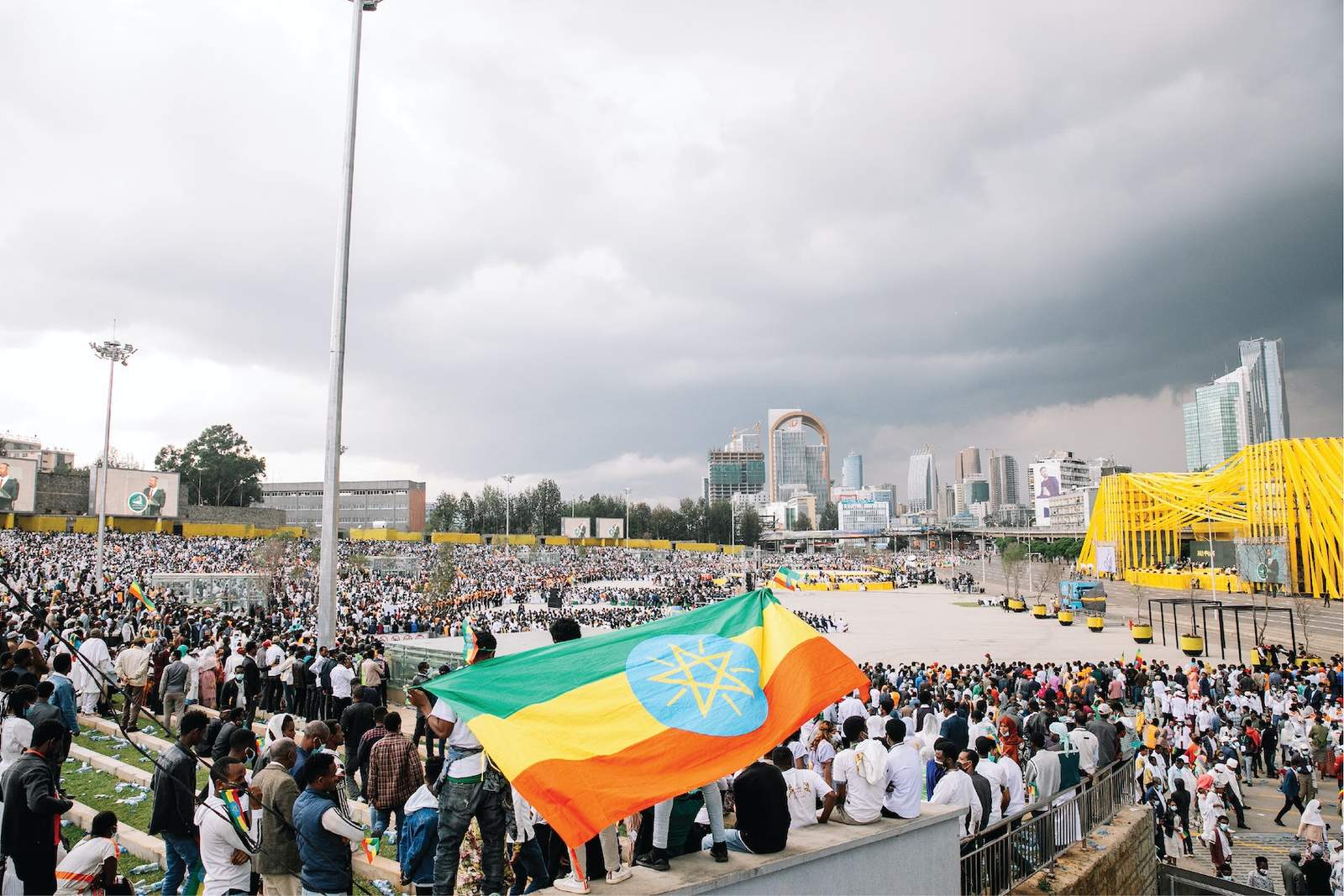
© Alebel Desta Consulting Architects and Engineers

© Alebel Desta Consulting Architects and Engineers
This led to one of the most intriguing things about the project, which was the fact that it appears in a matter of days and disappears in hours, something which was ceremonial as the team cut all pieces of fabric simultaneously, creating a cascading waterfall-like effect which was captivating for all involved in the project and the public..
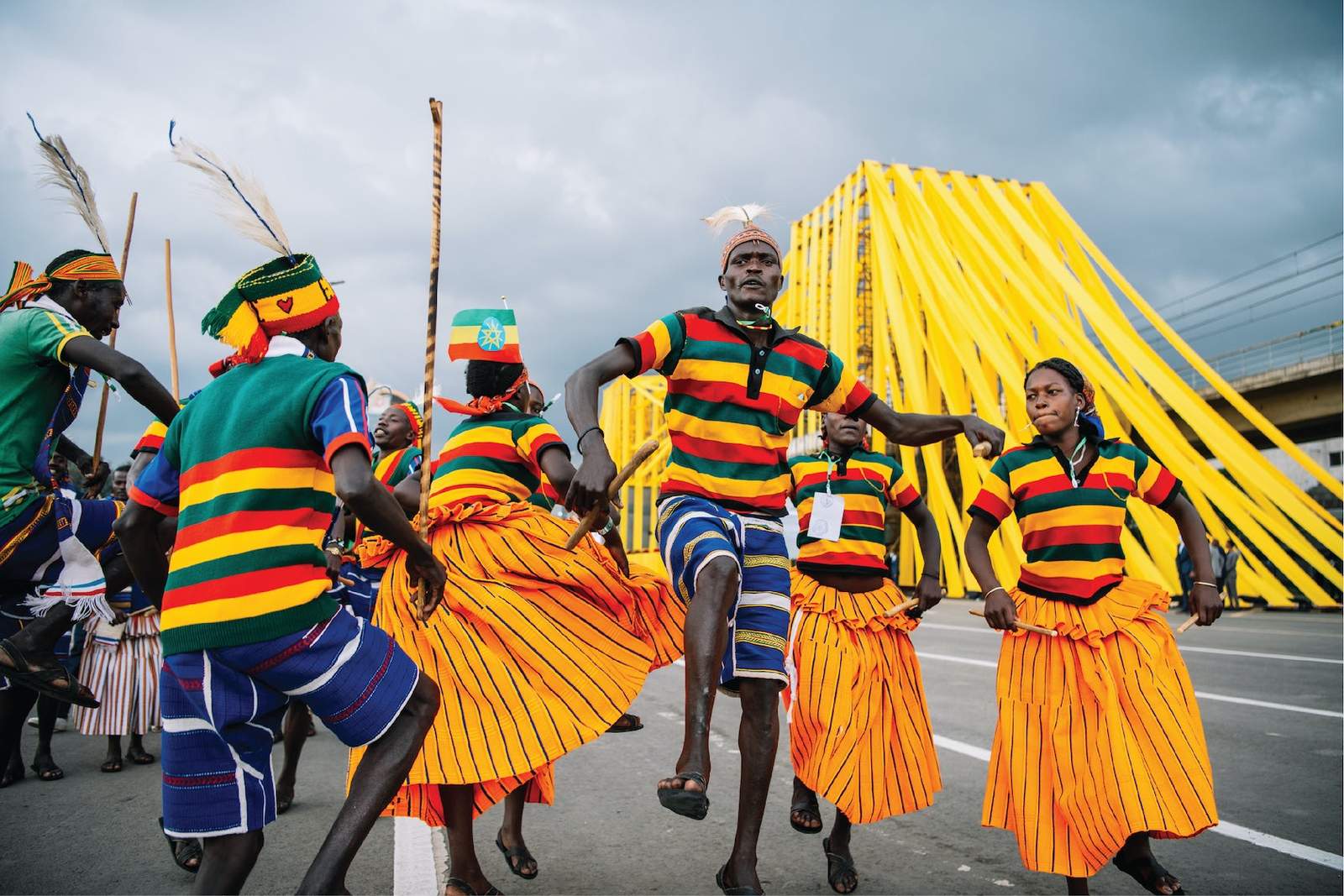
© Alebel Desta Consulting Architects and Engineers
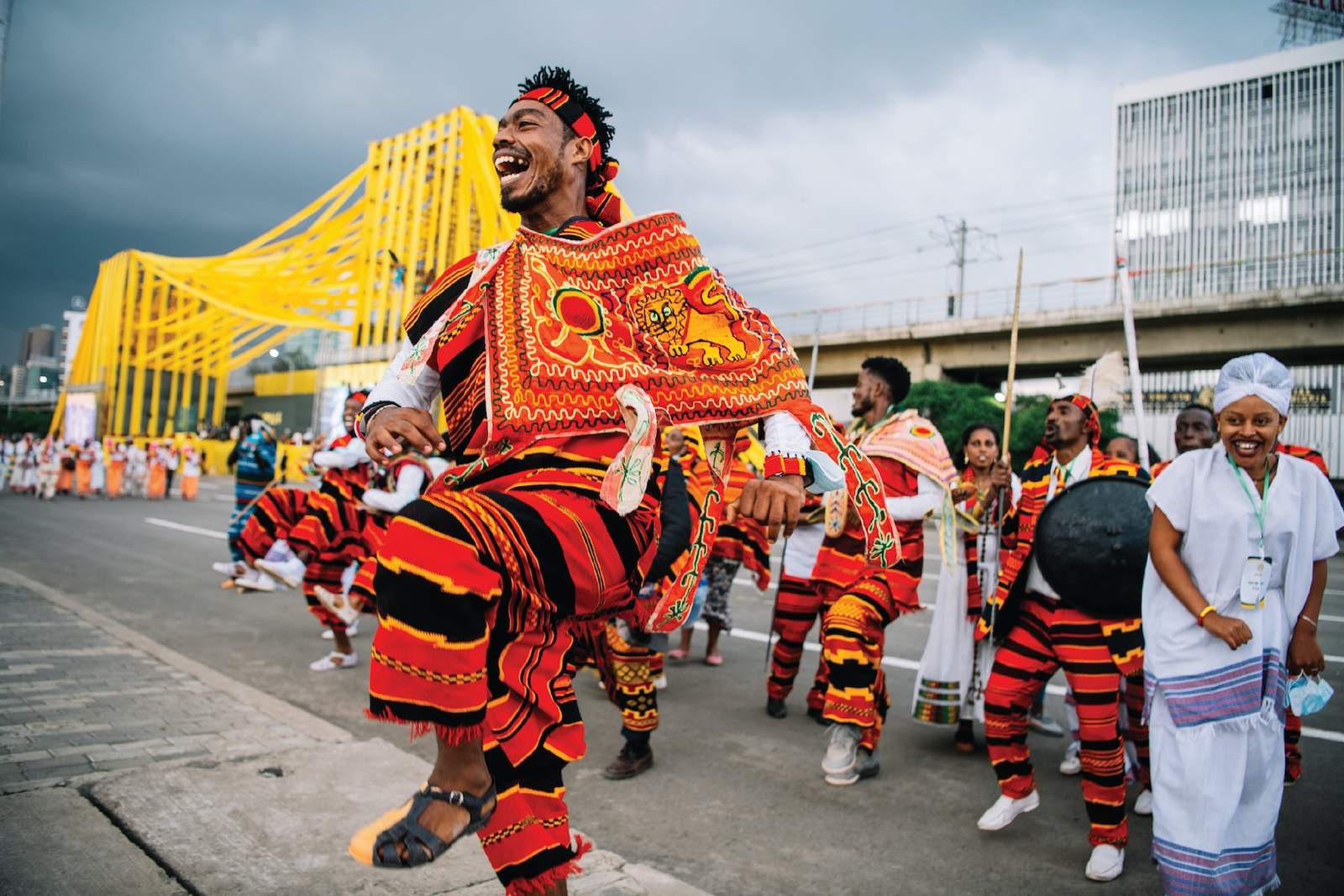
© Alebel Desta Consulting Architects and Engineers
New Beginnings Inaugural Urban Art Installation Gallery


 العربية
العربية